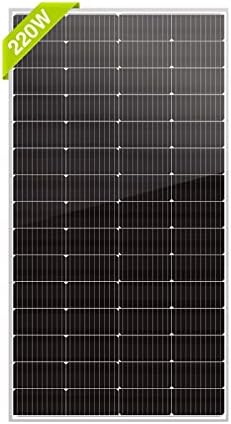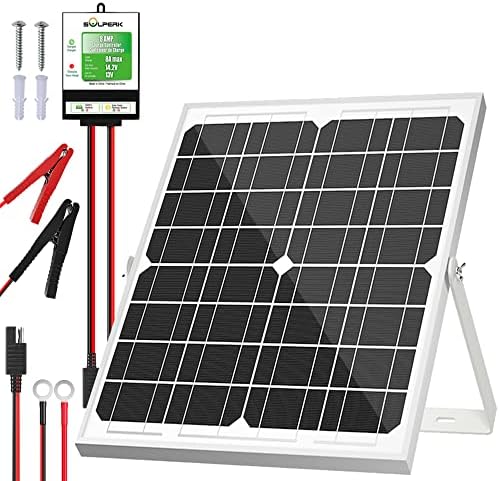### Maximizing Efficiency: Tips for Choosing the Right Solar Panels
There I was, nestled in my cozy off-grid cabin, surrounded by towering pines and the soothing sounds of nature. The sun was just beginning to peek over the horizon, casting a golden hue across my small homestead. I had recently made the significant decision to invest in solar panels, eager to harness the abundant energy from our planet’s most powerful light source. After hours of research, conversations with fellow solar enthusiasts, and a fair bit of trial and error, I discovered a wealth of tips and tricks for choosing the right solar panels. If you’re looking to maximize efficiency and make the most of your solar investment, read on!
#### Understanding Solar Panel Types
Before diving into specifics, let’s break down the types of solar panels available on the market. Typically, you’ll come across three major types: Monocrystalline, Polycrystalline, and Thin-Film.
1. **Monocrystalline Solar Panels**:
– Made from a single crystal structure, these panels boast high efficiency and a sleek black appearance.
– They typically perform better in low-light conditions and have a longer lifespan, often exceeding 25 years.
2. **Polycrystalline Solar Panels**:
– Constructed from multiple crystal structures, these panels are generally less efficient but more affordable.
– Ideal for homeowners looking for budget options, polycrystalline panels are a solid choice where space isn’t a constraint.
3. **Thin-Film Solar Panels**:
– Made by layering thin films of photovoltaic material, these are lightweight and flexible.
– While they have the lowest efficiency, they work well for specific applications, such as on curved surfaces or in shaded areas.
**Pro Tip**: For maximum energy output, Monocrystalline panels are often the best choice if your budget permits. They may be pricier upfront, but their efficiency pays off in the long run.
#### Calculating Your Energy Needs
Maximizing solar efficiency starts with understanding your energy requirements. Conduct an energy audit of your home. Calculate your total energy consumption by reviewing past utility bills and identifying major appliances. Here’s how to do it:
1. **List Your Appliances**: Make a list of all the major appliances in your home—refrigerators, washing machines, heaters, etc.
2. **Determine Wattage**: Find the wattage for each appliance. This information is usually found on the appliance label.
3. **Calculate Daily Usage**: Multiply the wattage by the number of hours each appliance operates daily.
4. **Find Your Daily Total**: Sum up the daily consumption for all appliances to get your total daily energy requirement.
By knowing exactly how much energy you need, you’ll be better equipped to choose the right number of solar panels and ensure you optimize your setup.
#### Choosing the Right Panel Size
Size matters when it comes to solar panels! After determining your energy needs, you’ll want to choose the right panel size. Each panel has a specified wattage output, typically ranging from 250W to 400W.
To calculate how many panels you need:
1. **Daily Energy Requirement (in Wh)**: From your energy audit.
2. **Sunlight Hours**: Research the average daily sunlight hours in your area (usually 4-6 hours).
3. **Panel Output**: Check the wattage of the panels you’re considering.
The formula is simple:
\[ \text{Total Panels Needed} = \frac{\text{Daily Energy Requirement}}{\text{Average Sunlight Hours} \times \text{Panel Wattage}} \]
With this calculation, you can ensure your solar setup is neither underwhelming nor excessive.
#### Efficiency Ratings and Performance
When selecting solar panels, be mindful of efficiency ratings. Most panels have an efficiency rating ranging from 15% to over 22%. Higher efficiency means more energy conversion from sunlight to electricity, allowing you to install fewer panels for the same output. Here’s a closer look:
– **Temperature Coefficient**: This indicates how much efficiency drops as temperatures rise. Look for a lower value; typically, panels with a coefficient of -0.3% to -0.4% are efficient.
– **Performance Warranty**: Many reputable manufacturers provide a 25-year warranty, but be sure to read the fine print! The best manufacturers will guarantee a specific level of performance over time.
#### Budgeting and Financial Considerations
Investing in solar panels can seem like a hefty up-front cost. However, it’s essential to view this as a long-term investment. Here are some financial considerations to keep in mind:
1. **Incentives and Rebates**: Research federal, state, and local incentives. Many regions offer tax credits or rebates that can significantly reduce your overall costs.
2. **Financing Options**: If paying cash isn’t feasible, look into solar loans or leasing options. Leasing can be a great way to get your panels without upfront costs, though it may not provide the same long-term savings.
3. **Return on Investment (ROI)**: Calculate your expected savings versus initial costs. Generally, the ROI for solar panels can be realized in 5-10 years, depending on energy prices and your system’s efficiency.
**Pro Tip**: Don’t overlook online calculators and tools that can help estimate the savings based on energy rates, local sun exposure, and panel efficiency.
#### Installation Considerations
Proper installation plays a crucial role in maximizing solar panel efficiency. Here are some tips to ensure your panels are installed correctly:
1. **Optimal Placement**: Position the panels to capture the most sunlight. South-facing roofs usually maximize exposure, but east and west can work depending on your energy needs.
2. **Avoiding Shade**: Ensure that no trees, buildings, or other obstructions can cast shadows over your panels during peak sunlight hours.
3. **Professional Installation**: Unless you’re a seasoned DIY enthusiast with experience in solar panel installation, hiring a professional can save you headaches and ultimately lead to better efficiency.
4. **Regular Maintenance**: Solar panels require minimal upkeep, but cleaning them periodically and ensuring they’re free of debris can improve performance.
#### Conclusion: Embrace the Power of the Sun!
Choosing the right solar panel system can seem daunting, but with thorough research and a clear understanding of your energy needs, you can make an informed decision that maximizes efficiency and minimizes costs. Remember, every step you take towards renewable energy not only benefits your wallet but also contributes positively to the planet.
By evaluating panel types, calculating your energy needs, considering efficiency ratings, and focusing on professional installation, you’re set to conquer the world of solar power. Harnessing the sun’s energy is not just about technology; it’s a lifestyle choice for a more sustainable future.
So get out there, soak up some sun, and make your off-grid dream a reality! Here’s to living efficiently and sustainably, one solar panel at a time.
**Bonus Pro Tips**:
– Consider integrating a solar battery storage system for energy independence during nights and cloudy days.
– Join local renewable energy forums for tips, support, and community approval on your chosen solar panel system.
– Regularly check your solar output and energy consumption. Adjustments might be necessary for peak efficiency.



